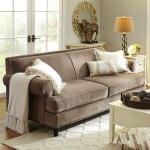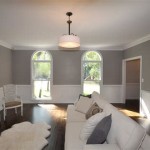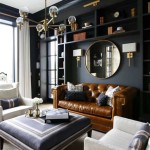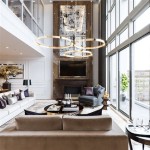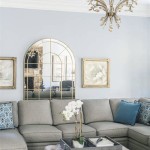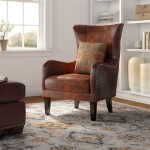Shelves For Living Room Wall Under TV: Maximizing Space and Style
The living room is often the heart of a home, serving as a space for relaxation, entertainment, and social gatherings. Optimizing the living room layout involves careful consideration of furniture placement and storage solutions. Integrating shelves on the living room wall under the television is a practical and aesthetically pleasing method to enhance both functionality and visual appeal. This article explores the various aspects of incorporating shelves under the TV, covering design considerations, functionality, installation, and best practices.
Design Considerations for Under-TV Shelving
The design process for under-TV shelving requires a balanced approach, considering both aesthetic and functional needs. The materials used, the style implemented, and the dimensions of the shelves should align with the overall design of the living room.
Material selection is a critical aspect of shelf design. Wood, metal, glass, and engineered wood products are common choices, each offering distinct characteristics. Solid wood provides a classic and durable option, lending warmth and character to the space. However, real wood can be more expensive and requires proper maintenance to prevent warping or damage. Metal shelves offer a modern and industrial aesthetic, providing strength and stability. Glass shelves offer a sleek and minimalist look, creating an illusion of more space. Engineered wood products, such as MDF (Medium-Density Fiberboard) or particleboard, are cost-effective alternatives that can be customized with various finishes, offering versatility in design.
Style and design choices should complement the existing decor. Floating shelves create a streamlined and contemporary look, appearing to hover on the wall. This design is visually light and helps to minimize clutter. Shelves with visible brackets offer an industrial or rustic appeal, adding character to the space. Built-in shelving units can provide a seamless and integrated look, appearing as an original part of the wall. Corner shelves are a practical option for maximizing space in smaller living rooms. The choice of style depends on individual preferences and the existing design elements within the room.
Dimensions are another key factor in shelf design. The height, width, and depth of the shelves need to be carefully considered to accommodate the intended items. The width should be sufficient to house electronic devices, such as gaming consoles, streaming devices, or sound systems. The depth of the shelves should be adequate to support books, decorative objects, or storage containers. The height between shelves should be adjusted to accommodate items of varying sizes. Planning the dimensions ensures that the shelves are both functional and visually balanced.
Color and finish play a crucial role in the overall aesthetic. Shelves can be painted to match the wall color, creating a cohesive and integrated look. Alternatively, contrasting colors can be used to create a focal point and add visual interest. Natural wood finishes offer warmth and texture, while metallic finishes add a touch of sophistication. Coordinating the color and finish with the existing furniture and decor elements helps to create a harmonious and well-designed living room.
Functionality and Practical Uses of Under-TV Shelving
Beyond aesthetics, shelves under the TV offer a range of functional benefits. They provide valuable storage space, help to organize electronic devices, and serve as a platform for displaying decorative items.
Storage is a primary benefit of under-TV shelving. Shelves can be used to store a variety of items, including books, DVDs, games, and electronic accessories. By incorporating shelves, the living room can be kept tidy and organized, reducing clutter and improving the overall ambiance. Storage containers, such as baskets or decorative boxes, can be used to conceal smaller items and maintain a clean and organized appearance.
Organizing electronic devices is another important function. Under-TV shelves provide a dedicated space for gaming consoles, streaming devices, sound systems, and other electronic equipment. This helps to centralize these devices and prevent them from being scattered around the room. Cable management is crucial for maintaining a tidy appearance. Shelves with built-in cable management systems can help to conceal wires and prevent tangling. Alternatively, cable ties or clips can be used to organize and route cables behind the shelves.
Displaying decorative items adds personality and character to the living room. Shelves can be used to showcase artwork, photographs, collectibles, and other decorative objects. The arrangement of these items can be varied to create visual interest and reflect individual style. Plants can also be incorporated to add a touch of nature and freshness to the space. Carefully curated displays can transform the shelves from a simple storage solution into a focal point of the room.
Optimizing space is particularly important in smaller living rooms. Under-TV shelves can help to maximize vertical space, providing additional storage without taking up valuable floor space. This is especially beneficial in apartments or condominiums where space is limited. Multi-functional shelves, such as those with built-in drawers or cabinets, can provide even more storage options. Combining shelves with other storage solutions, such as media consoles or wall cabinets, can further enhance the functionality of the living room.
Installation Considerations and Best Practices
Proper installation is essential for ensuring the safety and stability of under-TV shelving. The installation process varies depending on the type of shelf, the wall material, and the tools available. Following best practices and safety guidelines is crucial for a successful installation.
Planning and preparation are key to a successful installation. Before starting, it is important to measure the wall space and mark the desired location of the shelves. Checking for studs in the wall is crucial for providing strong support. A stud finder can be used to locate studs behind the drywall. If studs are not available in the desired location, drywall anchors can be used to provide additional support. Selecting the appropriate type of anchor based on the weight capacity of the shelf is essential.
Tools and materials should be gathered before beginning the installation process. Common tools include a drill, screwdriver, level, measuring tape, pencil, and stud finder. Screws, anchors, brackets, and other hardware should be appropriate for the type of shelf and wall material. Safety glasses and gloves should be worn to protect against injury. Having all the necessary tools and materials on hand will streamline the installation process and prevent delays.
Installation techniques vary depending on the type of shelf. Floating shelves typically require a mounting bracket that is attached to the wall. The shelf then slides onto the bracket, creating a seamless and floating appearance. Shelves with visible brackets are attached directly to the wall using screws and anchors. Built-in shelving units may require more extensive installation, involving framing and securing the shelves to the wall studs. Following the manufacturer's instructions is crucial for ensuring proper installation and safety.
Safety precautions should be adhered to throughout the installation process. Turning off the power to the electrical outlets near the installation area is recommended to prevent electric shock. Avoiding over-tightening screws, as this can damage the wall or the shelf. Ensuring that the shelves are level is crucial for preventing items from sliding off. Regularly inspecting the shelves for any signs of damage or instability is important for maintaining safety over time.
Cable management is an important aspect of the installation process. Hiding cables behind the shelves can improve the overall appearance of the living room. Cable ties, clips, or sleeves can be used to bundle and organize cables. Routing cables through the wall can provide a more seamless and hidden solution, but may require professional installation. Labeling cables can help to identify them easily and prevent confusion during maintenance or troubleshooting.
Weight capacity should be considered to prevent overloading. Each shelf has a maximum weight capacity that should not be exceeded. Distributing weight evenly across the shelf can help to prevent sagging or damage. Avoid placing heavy items on the shelves, as this can compromise their stability. Periodically checking the shelves for any signs of stress or strain is important for ensuring their long-term durability.
Finishing touches can enhance the aesthetic appeal of the shelves. Adding decorative trim or molding can create a more polished and finished look. Painting or staining the shelves to match the wall color can create a seamless and integrated appearance. Adding backlighting or accent lighting can highlight the shelves and create a dramatic effect. These finishing touches can elevate the overall design and create a personalized and inviting living room space.

20 Outstanding Ideas For Tv Shelves To Design More Attractive Living Room

How To Decorate Around Your Tv With Floating Shelves

18 Tv Wall Ideas That S Practical Stylish Media

Open Wood Shelving Helps Fill Out This Tv Wall

Floating Tv With Minimalist Wooden Built In Shelves

30 Ideas For Tv Units With Storage Bespoke Carpentry London

Shelves Around Tv Design Ideas

Floating Tv Shelf For 75 Inch Wall Mounted Entertainment Center Under Living Room Black

35 Tv Wall Ideas For A Chic Functional Entertainment Hub

How To Decorate Around Your Tv With Floating Shelves

